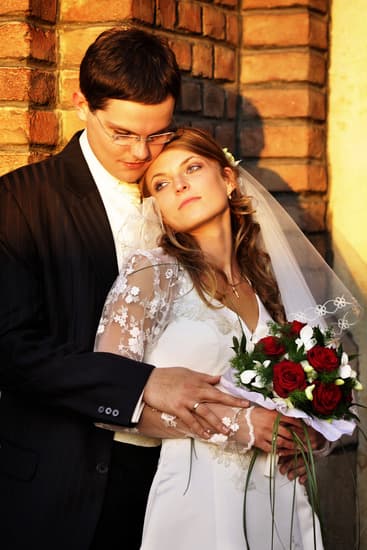Are weddings pagan? While modern wedding ceremonies have evolved to incorporate a variety of customs and traditions, the roots of these practices can be traced back to their pagan origins. From the significance of certain rituals to the symbolism behind different elements, the connection between paganism and weddings is deeply ingrained in many cultures around the world.
Throughout history, wedding traditions have been influenced by various belief systems, including paganism. Understanding the history and origins of these practices provides valuable insight into the significance of wedding rituals and the cultural context in which they developed. By exploring the connection between paganism and wedding ceremonies, we can gain a deeper appreciation for the rich tapestry of customs that continue to shape contemporary nuptial celebrations.
In this article, we will delve into the history of wedding traditions and how paganism has influenced modern ceremonies. We will also consider the symbolism behind pagan wedding rituals and traditions, as well as examine how these elements are still present in weddings today. By examining different perspectives on this topic, we hope to shed light on the ongoing debate surrounding the question: Are weddings pagan? Join us as we explore the fascinating intersection between paganism and contemporary wedding practices.
History of Wedding Traditions
The history of wedding traditions is a fascinating subject, as these customs often have deep roots in ancient rituals and beliefs. One of the most influential sources on modern weddings is paganism. The practices and symbolism of pagan wedding traditions continue to play a significant role in shaping how we celebrate marriages today.
Paganism has had a profound impact on modern weddings, with many of the traditions and rituals originating from ancient pagan ceremonies. In fact, some scholars argue that the origins of many wedding customs can be traced back to various pagan cultures and their religious practices. For example, the exchange of rings during a wedding ceremony is believed to have pagan roots, symbolizing eternal love and unity – concepts that were important in pagan beliefs.
Understanding the influence of paganism on wedding traditions can provide valuable insight into the symbolism behind these rituals. Many elements commonly associated with weddings today, such as floral decorations, handfasting ceremonies, and fertility symbols, can be traced back to pagan customs. These traditions were meaningful within pagan societies and continue to hold significance in contemporary wedding ceremonies.
The connection between paganism and wedding ceremonies raises the question: are weddings pagan? While some view modern weddings as purely secular or religious events, others argue that they are deeply rooted in pagan customs and beliefs. Both perspectives offer compelling arguments, highlighting the complex interplay between ancient traditions and contemporary practices in celebrating marriage.
| Pagan Influence | Modern Wedding Traditions |
|---|---|
| Exchange of rings | Symbolizing eternal love and unity |
| Floral decorations | Commonly associated with weddings today |
| Handfasting ceremonies | Traced back to pagan customs |
Pagan Wedding Rituals and Traditions
The Sacredness of Nature
One of the key elements of pagan wedding rituals is the emphasis on nature and its sacredness. Paganism celebrates the cycles of nature, and this is often reflected in wedding ceremonies through the use of natural elements such as flowers, herbs, and plants. The inclusion of these natural elements symbolizes the couple’s connection to the earth and their commitment to living in harmony with nature.
Rites of Passage
In pagan traditions, a wedding is seen as a rite of passage, marking the transition from singlehood to marriage. This transition is often celebrated with rituals that honor this significant life change. These rituals may include symbolic acts such as handfasting, where the couple’s hands are bound together with ribbons or cords to signify their union, or jumping over a broomstick to represent the crossing into a new phase of life.
The Divine Feminine and Masculine
Paganism recognizes the divine feminine and masculine energies present in all individuals, and this notion is also reflected in pagan wedding customs. The union of a couple is seen as a harmonious balance between these energies, with both partners bringing their unique qualities to create a complementary partnership. This symbolism is often incorporated into wedding ceremonies through invocations or blessings that honor these divine aspects within each person.
Understanding the symbolism behind pagan wedding rituals provides insight into their enduring influence on modern weddings. By embracing these ancient traditions, couples can infuse their ceremonies with deeper meaning and connect to timeless themes of nature, spiritual growth, and partnership.
The Connection Between Paganism and Wedding Ceremonies
Pagan Origins of Wedding Traditions
The connection between paganism and wedding ceremonies can be traced back to the ancient world, where many of the rituals and traditions associated with modern weddings originated. Pagan societies celebrated marriage as a sacred union, often incorporating elaborate ceremonies and symbolic gestures to bless the couple and ensure their fertility and prosperity. These rituals were deeply rooted in nature and the cycles of the seasons, reflecting a reverence for the earth and its natural elements.
Symbols and Rituals in Pagan Weddings
Pagan wedding ceremonies were rich with symbolism, drawing from the natural world and mythological beliefs. For example, the exchange of rings represented an eternal bond, while the use of flowers symbolized fertility and growth. Handfasting, a ritual in which the hands of the couple are bound together with ribbons or cords, signified their commitment to each other. These traditions continue to inspire contemporary wedding practices, as couples seek to infuse their ceremonies with meaning and significance.
Modern Interpretations of Pagan Wedding Traditions
In recent years, there has been a resurgence of interest in incorporating pagan elements into wedding ceremonies. Couples are drawn to the spiritual and symbolic aspects of pagan traditions, which offer a deeper sense of connection to nature and ancient wisdom. From outdoor handfasting ceremonies to incorporating elements such as herbs or crystals into their nuptials, many couples are embracing pagan influences as a way to personalize their weddings and reflect their values.
As we delve deeper into the connection between paganism and wedding ceremonies, it becomes clear that these ancient traditions continue to inspire and shape contemporary wedding practices. Whether couples consciously embrace pagan rituals or simply draw inspiration from them, the influence of paganism on weddings is undeniable. By honoring these timeless traditions, couples can create meaningful and authentic celebrations that reflect not only their love for each other but also their connection to nature and the spiritual world.
Common Pagan Elements Found in Weddings Today
Many wedding traditions that are commonly practiced today actually have pagan origins. From the use of flowers to the significance of certain colors, there are numerous elements in modern weddings that can be traced back to pagan rituals and beliefs.
One common pagan element found in weddings is the use of certain types of flowers. For example, the tradition of brides carrying bouquets dates back to ancient times when strong-smelling herbs and spices were carried to ward off evil spirits. Additionally, specific flowers like roses and daisies have symbolic meanings in pagan traditions, with roses representing love and daisies symbolizing innocence and purity.
Another popular pagan element in modern weddings is the inclusion of handfasting ceremonies. Handfasting is a ritual where the couple’s hands are symbolically tied together with ribbon or cord, representing their union and commitment to each other. This tradition originates from ancient Celtic customs and has become increasingly popular in contemporary weddings as a way for couples to honor their pagan heritage.
In addition to flowers and handfasting, incorporating natural elements such as crystals, stones, or feathers into wedding decor is another example of how pagan traditions have made their way into modern ceremonies. These items hold significant meaning in pagan belief systems and can be used as decorative elements that add a deeper layer of symbolism to the wedding celebration.
| Wedding Element | Pagan Origin |
|---|---|
| Flowers | Represent love, purity, and protection from evil spirits |
| Handfasting Ceremony | Ancient Celtic ritual symbolizing unity and commitment |
| Natural Elements (crystals, stones, feathers) | Symbols of natural energies and spiritual significance in paganism |
The Debate
Weddings have been a significant part of human culture for centuries, and as such, they have been influenced by various traditions and belief systems. One of the most debated topics surrounding weddings is the influence of paganism on modern wedding ceremonies. While some argue that weddings have deep pagan roots, others believe that modern weddings are far removed from their pagan origins.
Several perspectives exist on the debate of whether weddings are pagan. Some scholars and historians argue that many common wedding traditions can be traced back to ancient pagan rituals and beliefs. These perspectives point to specific customs, such as the exchange of rings, handfasting, and even the timing of the year for weddings, as evidence of pagan influence.
On the other hand, there are those who strongly refute the idea that weddings are inherently pagan. They argue that while certain elements may have originated from pagan practices, contemporary weddings have evolved over time and have been influenced by various cultures and religions. For these individuals, the focus is on the symbolism and meaning behind wedding traditions in their current form rather than their historical origins.
To further understand this debate, it is essential to examine specific examples of how pagan elements have been integrated into modern wedding ceremonies. The use of natural elements like flowers or herbs representing fertility and prosperity could be rooted in ancient pagan beliefs related to nature worship. Additionally, rituals like jumping over a broom or incorporating specific colors can also be seen as remnants of ancient pagan customs.
- Some common debates on whether or not weddings are actually rooted in paganism include:
- The origins of exchanging rings
- The significance behind certain wedding dates
- The use of certain symbols within wedding ceremonies
- Other perspectives believe that although some traditions may have originated from paganism, they have since taken on new meanings within different cultures.
- It’s important to keep an open mind when exploring this topic in order to better understand how different cultures and belief systems have shaped contemporary wedding practices around the world.
How Paganism Has Shaped Wedding Customs and Beliefs
Paganism has had a significant influence on the customs and beliefs surrounding weddings. The ancient pagan traditions have shaped many of the rituals and practices that are still being observed in modern wedding ceremonies. From the exchange of rings to the use of floral garlands, there are numerous elements that can be traced back to pagan rituals.
One of the most prominent influences of paganism on wedding customs is the symbolic meaning behind various rituals. For example, the tradition of handfasting, which involves tying the hands of the couple together, symbolizes their union and commitment to each other. This ritual has its roots in pagan Celtic traditions and is still practiced in some modern weddings today. Similarly, the use of herbs and flowers in wedding bouquets and decorations stems from pagan beliefs about fertility and protection.
Furthermore, many wedding traditions such as jumping over a broomstick, which is often associated with African-American weddings, also have origins in pagan rituals. These traditions were originally seen as a way to ward off evil spirits and bring good luck to the couple. The incorporation of these elements into modern weddings not only adds depth and meaning to the ceremony but also serves as a nod to the historical and cultural significance of these traditions.
Overall, it is clear that paganism has played a crucial role in shaping wedding customs and beliefs throughout history. While there may be debates about whether weddings are truly pagan, there is no denying the undeniable influence that ancient pagan traditions continue to have on contemporary wedding practices.
Modern Interpretations of Pagan Wedding Traditions
Pagan wedding traditions have had a significant influence on contemporary wedding practices, as seen in the incorporation of various elements and rituals. While some may argue that modern weddings are purely secular or religious in nature, the presence of pagan customs cannot be denied. In fact, many couples today seek to include pagan elements in their ceremonies to honor ancient traditions and connect with nature.
One way in which pagan wedding traditions are interpreted in modern ceremonies is through the use of symbolic rituals. For example:
- Handfasting: This ancient Celtic ritual involves tying the couple’s hands together with ribbons or cords to symbolize their union and commitment to each other.
- Jumping the broom: A tradition rooted in African paganism, this custom symbolizes sweeping away the past and entering into a new phase of life together.
- Circling the sacred fire: Drawing from various pagan traditions, this ritual involves the couple walking around a fire, representing their journey into married life and the purifying power of flames.
Moreover, modern interpretations of pagan wedding customs also include the incorporation of natural elements and symbols:
- Use of natural materials such as flowers, herbs, and crystals during ceremonies and decorations.
- Symbols like the pentacle or triple moon being integrated into wedding jewelry or decor to represent spiritual aspects of love and union.
- Incorporating outdoor settings or natural landscapes as venues for weddings to honor nature and its significance in pagan beliefs.
Ultimately, modern interpretations of pagan wedding traditions serve as a way for couples to infuse their ceremonies with deeper symbolism and spiritual meaning. Whether it be through symbolic rituals or incorporating natural elements, these practices reflect a desire to connect with ancient traditions and embrace the beauty of nature within the context of marriage.
Conclusion
In conclusion, it is clear that the influence of Paganism on contemporary wedding practices cannot be ignored. The history of wedding traditions and rituals reveals how Paganism has played a significant role in shaping modern weddings. From ancient rituals to symbolic elements, the connection between Paganism and wedding ceremonies is evident in various cultures around the world.
The debate over whether weddings are pagan continues to spark discussions among scholars, historians, and those interested in understanding the origins of wedding customs. While some may argue that modern interpretations have distanced weddings from their pagan roots, others believe that certain elements and traditions still reflect Pagan influences.
Regardless of where one stands on this debate, it is undeniable that Paganism has left a lasting imprint on wedding customs and beliefs. The incorporation of nature-centric symbolism, seasonal themes, and sun-oriented rituals into contemporary weddings demonstrates how Pagan traditions continue to inspire and influence the way we celebrate love and union.
As couples continue to seek meaningful ways to infuse their weddings with unique symbolism and spiritual significance, it is likely that the influence of Paganism will persist in shaping future wedding practices. Whether consciously or subconsciously, the echoes of ancient Pagan rituals are present in many aspects of modern weddings, adding depth and richness to these joyous celebrations of love.
Frequently Asked Questions
What Is a Pagan Marriage?
A Pagan marriage is a union ceremony that aligns with the beliefs and practices of Paganism, which is a modern religious movement based on a reverence for nature and ancient polytheistic traditions.
Are Wedding Rings Pagan?
Wedding rings have some pagan roots, as the circular shape symbolizes eternity and the use of rings in wedding ceremonies can be traced back to ancient pagan cultures. However, the modern concept of exchanging rings is not exclusively pagan.
Where Did Weddings Originate From?
Weddings have ancient origins, with early evidence of marriage ceremonies dating back to the ancient Egyptians and Mesopotamians. Different cultures throughout history have contributed to shaping the rituals and customs associated with weddings.

I have been involved in marriages for over 20 years helping couples and singles understand more about them.





